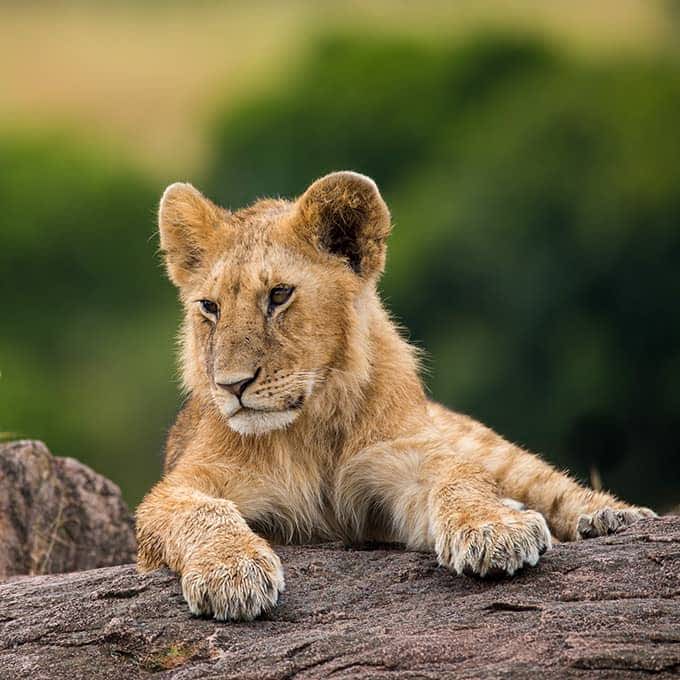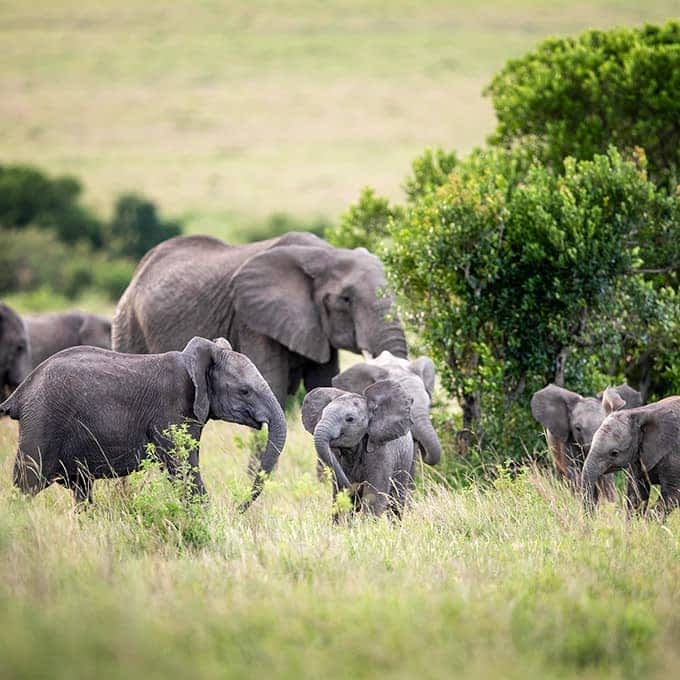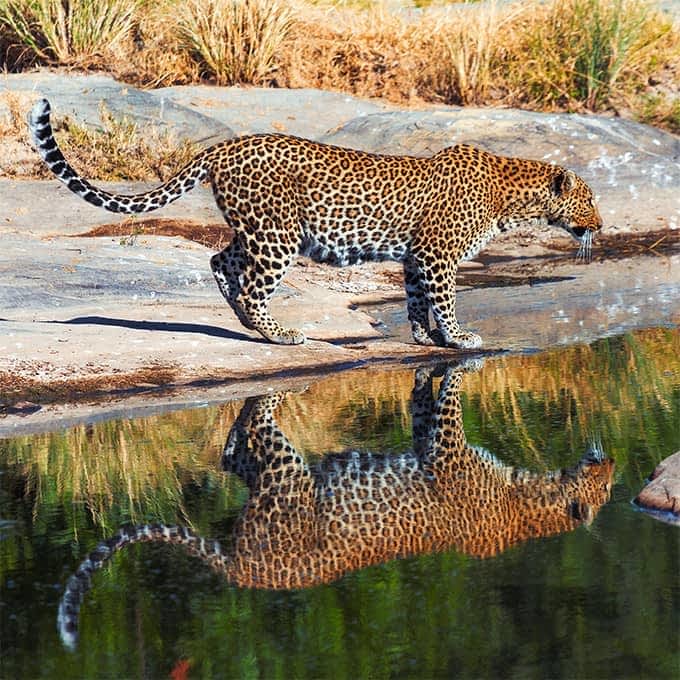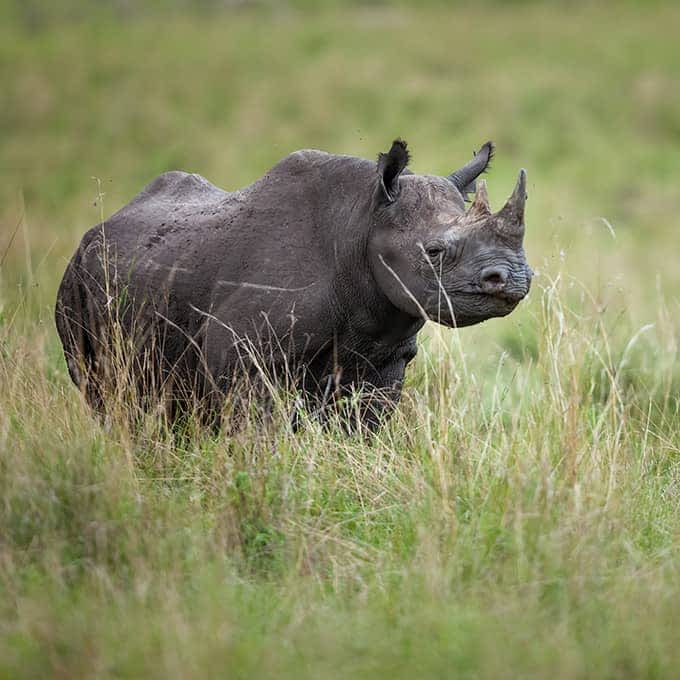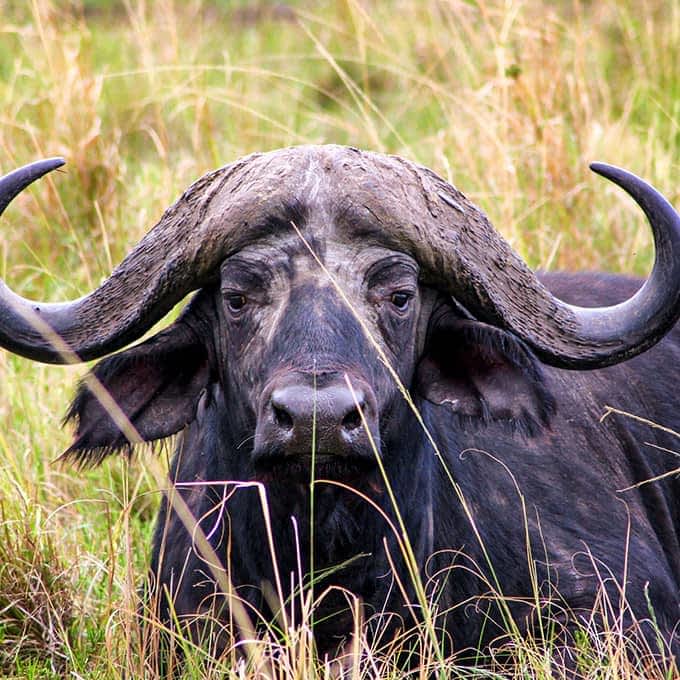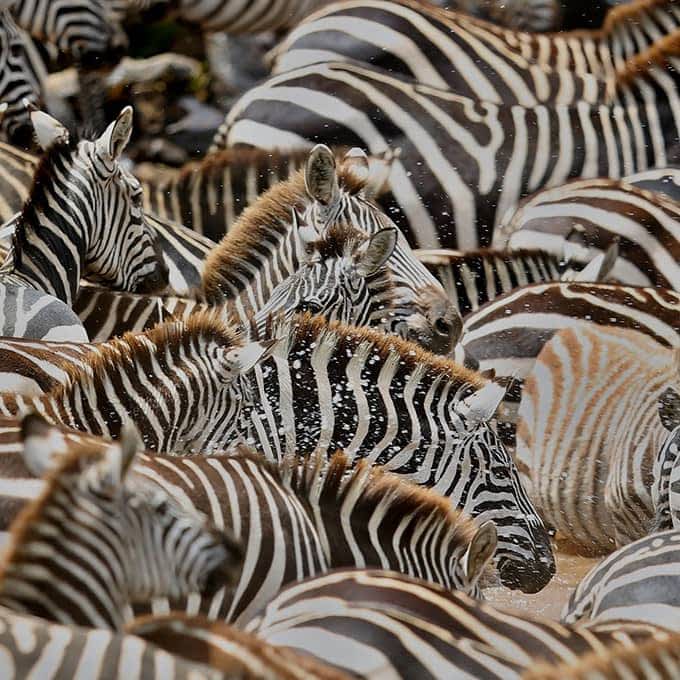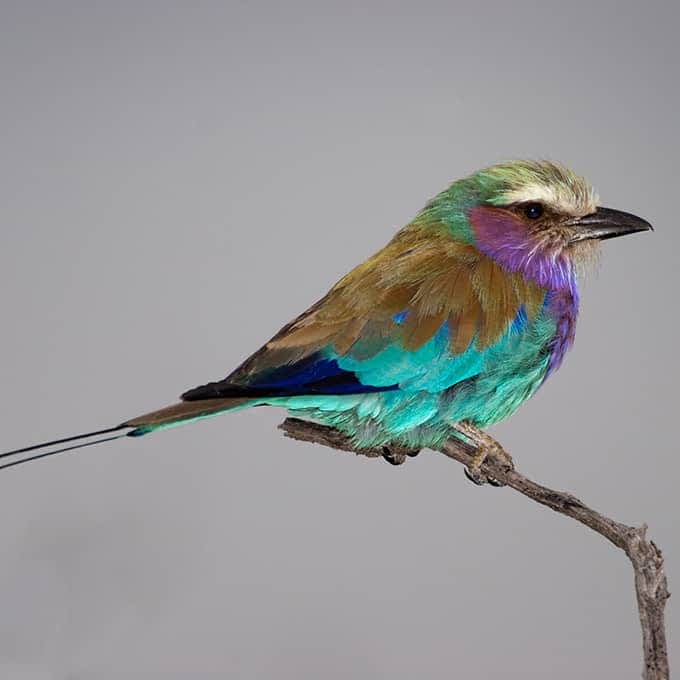The Masai Mara is nature's epic masterpiece
Most safari travellers dream of spotting the coveted 'Big Five'. Luckily, lions, elephants, leopards and Cape buffalos are a relatively common sight in the Masai Mara. Rhinos do occur but are notoriously difficult to spot. The term 'Big Five' actually has a very dark origin. It has little to do with the size of these animals and everything to do with the difficulty in hunting them. Luckily these days they are mostly sought after for the perfect photograph. In addition to the 'Big Five', the Masai Mara is home to an extraordinary variety of interesting animals. Here's a quick glance at the most popular wildlife living in the Mara ecosystem.
Lion (Panthera Leo)
Africa’s 'king of the jungle', the lion, is both awe-inspiring and terrifying due to its strength, speed and reputation. Approximately 850 to 900 lions live within the Masai Mara National Reserve and surrounding conservancies. The Mara-ecosystem is one of the world's premier locations to spot this mighty beast in the wild. Lions are one of the most sociable big cat predators and they generally live in prides of fifteen to twenty lions. A pride can consist of up to three males, several adult female lions (of which one is the dominant female) and several sub-adults and cubs. Male lions are known to lay claim and defend large pieces of land ranging from 30 – 400 square kilometres. The females of this species are known to be the lion pride hunters, male lions only occasionally assist during a hunt. They will generally be called in to take down larger animals. Their favorite meals consist of zebra and wildebeest, but when these are out of season (beyond the great migration season) they also enjoy preying on warthogs and buffalo. Lions are known to sleep approximately twenty hours a day. Masai Mara is also home to the world famous 'Marsh Pride', a group of lions made famous by the BBC's Big Cat Diary and Dynasties.
Elephant (Loxodonta Africana)
One of the most common sightings of a 'Big Five' animal in the Masai Mara is of the African elephant. The elephant is the largest land animal on the planet. At its largest, the elephant can grow up to seven and a half metres long, almost three and a half metres high and can weigh up to six tons. Despite being threatened by poachers for its ivory tusks, the African elephant population in the Mara has grown in recent years. This incredibly intelligent and sociable animal is known for having strong family ties. They are matriarchal, which means they live in female-led groups. Generally the matriarch is the largest and the eldest elephant of the group. She leads a multi-generational herd of females, known as cows, and their offspring. The adult male elephants usually live on their own, but occasionally they will form small groups of their own. Family units usually are made up of approximately ten elephants, but at times several family units get together to form a 'clan' of up to 70 elephants led by a single female elephant. Elephants live on a diet of grasses, fruit, roots and bark and can eat up to 300 pounds of food per day.
Leopard (Panthera pardus)
Where lions are known for their strength and majestic appeal, leopards are often heralded for their grace and stealth. There's quite a large population of leopards living in the Mara, however they are rather elusive (and not always easy to spot) and are one of the species on the IUCN Red List. They are listed as vulnerable due to the loss of their habitat and human encroachment. These big cats are shy night-time hunters and tend to hunt on their own. Adult leopards live a solitary life and only get together with other leopards during mating. They prefer to live in wooded savannahs and rocky outcrops, however there's also a very good chance you'll spot one perched up in a tree. While hidden up in a tree, they spot their prey using their incredible vision, hearing and a highly developed sense of smell and attack unsuspecting prey from above. Their favourite prey is antelopes and baboons. Once they've killed their prey, they're known to carry it high into a tree to hide it from other predators.
Rhino (Rhinocerotidae)
Kenya is home to both the white and black rhino, although the white rhino is more commonly seen (especially near Lake Nakuru). Of the two, the black rhino is slightly smaller and more aggressive than the white rhino. In reality there is very little colour difference between the two. Although the Mara is home to a fairly impressive black rhino population (especially in the Mara Triangle area), it is not very likely that you will encounter rhinos during your Masai Mara safari. There are 35 - 50 black rhinos living in the Masai Mara at any given time - although they cross over into the Serengeti from time to time as well. Most black rhinos live solitary. The only strong family tie between rhinos is between a mother and her calf. They have poor eyesight, which might explain why they are ready and wired to charge at anything moving for no good reason. They do however have a very good sense of hearing and smell. Black rhinos can live to become 35 - 40 years in the wild. Adult black rhinos can grow to a height of one and a half metres tall and three and a half metres long. On average they weigh up to 850 to 1600 kilograms.
Cape Buffalo (Syncerus caffer)
The Cape Buffalo (or African Buffalo as it’s also known) is one of the most dangerous animals in East Africa. Lone males in particular can be aggressive, unpredictable and weigh approximately 800 kilograms. A dangerous combination. Female buffalos protecting their young are also extremely aggressive. In the Mara buffalo are generally found in herds of approximately 100 individuals or more. They are mostly found near water sources, especially during the dry season.
Masai Mara Great Migation
Another key attraction in the Masai Mara is of course the legendary 'Great Migration'. This annual trek from the Serengeti to the Masai Mara by millions of wildebeest, zebras and gazelles is an incredible sight to see. The animals set out on their trek from the Serengeti sometime in July and August and start arriving in the Masai Mara around the same time. One of the dramatic legs of this quest is the crossing of the infamous Mara River. During the river crossing the herd animals encounter the perils of crocodiles laying in wait for an easy meal. Come October, the throngs of animals slowly head back to the Serengeti. Naturally nature lives by its own time table, so there's no way to know the exact dates that the migration will occur in any given year. However, the best months to view the migration in the Masai Mara are September and October. Overall the best months for spotting wildlife in the Mara ecosystem is from June to October. Read more about the Great Migration.
Masai Mara birdlife
When staying in the Masai Mara you might be tempted to keep your eyes scanning the grounds, trees and shrubs before you. However, there'sa lot to see in the skies above the African Plains as well. There are over 500 bird species living in the region. The good news is that most trackers and guides will make sure you don’t miss out on the colourful birds flying around you. You won't want to miss out on the bright green and yellow feathers of a Fischer’s Lovebird or the Kori Bustard. The Mara-Serengeti ecosystem is an important area for habitat-based bird conservation. The Masai Mara is also known for its impressive collection of raptors. There are 57 different species flying around the area, such as the impressive Bateleur eagle. Bird watching is possible all year round, however it's at its best between November and April. This is when the European migratory birds arrive as well. Read more about Masai Mara birds.
Further reading

